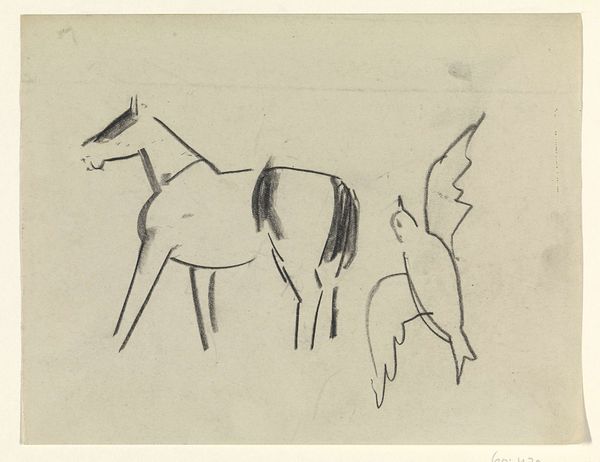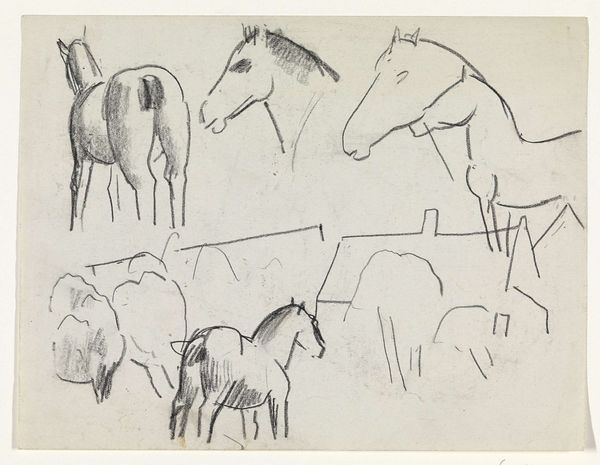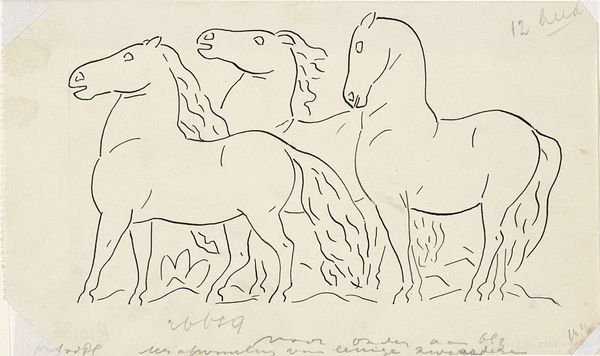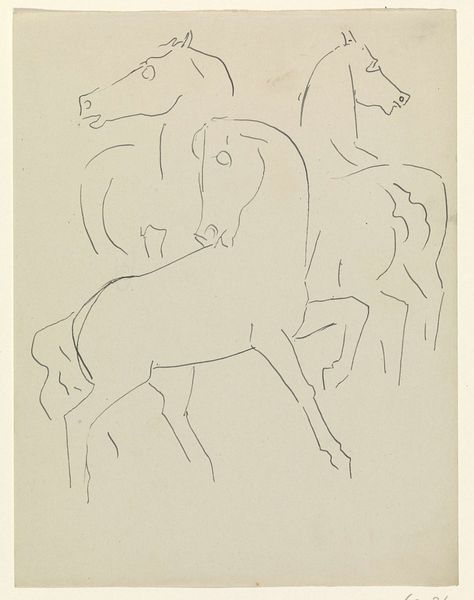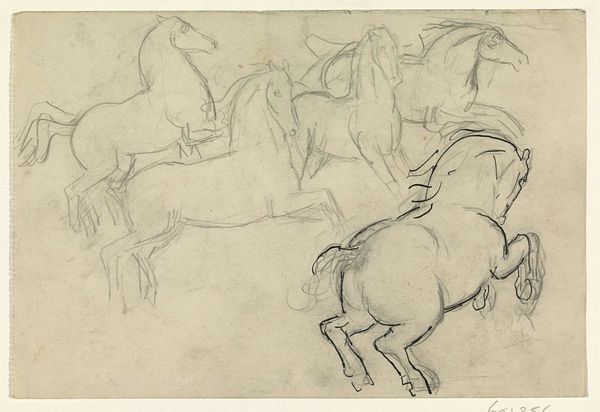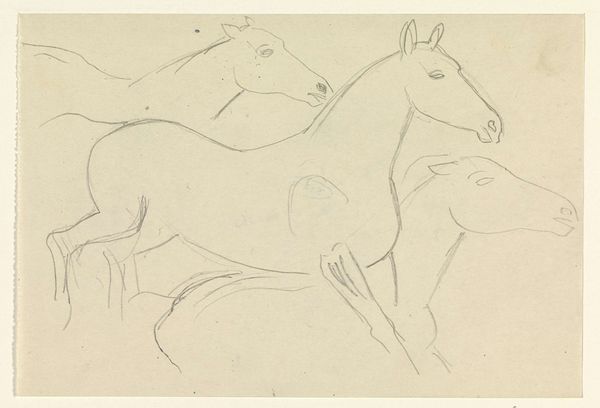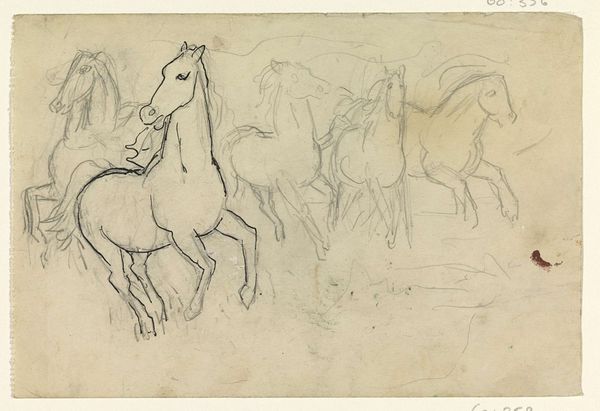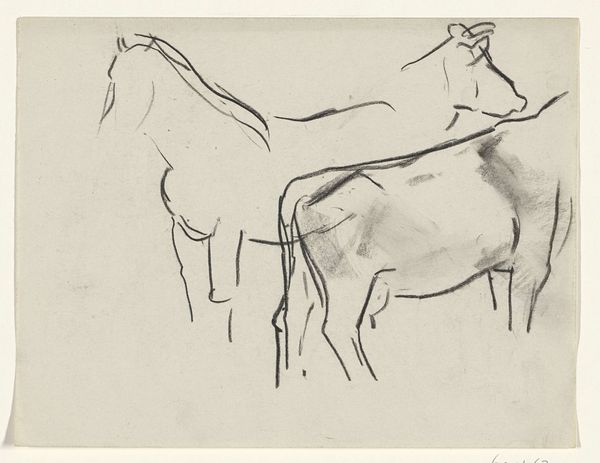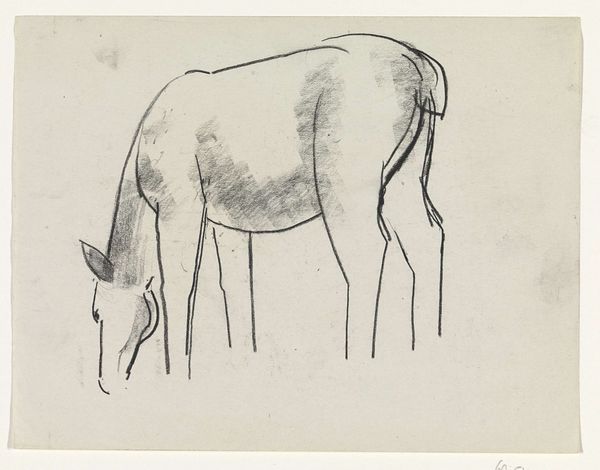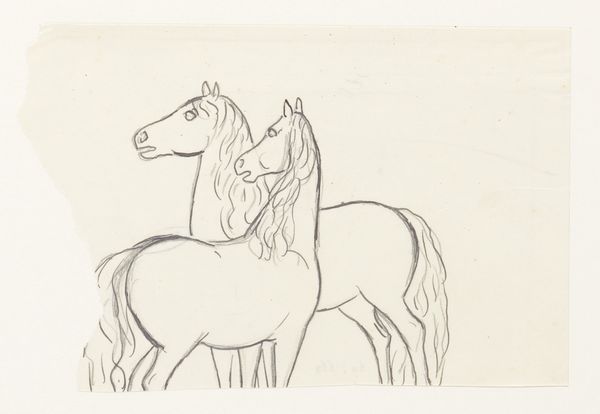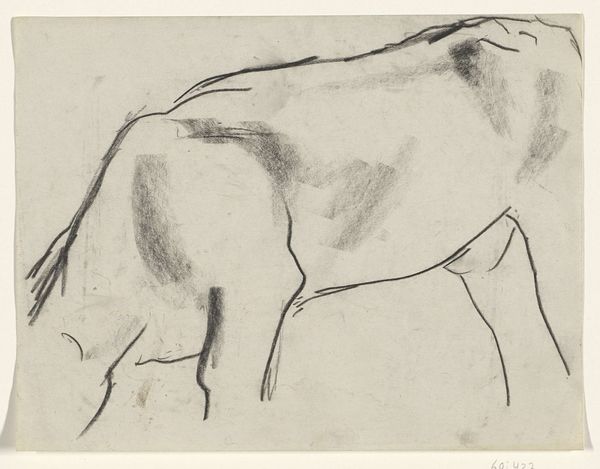
drawing, pencil, graphite
#
drawing
#
animal
#
pen sketch
#
pencil sketch
#
figuration
#
pencil
#
horse
#
line
#
graphite
Dimensions: height 163 mm, width 212 mm
Copyright: Rijks Museum: Open Domain
Curator: Welcome. Here we have ‘Vijf paarden,’ or 'Five Horses,' by Leo Gestel. It’s a drawing created sometime between 1891 and 1941. The artist employed pencil and graphite on paper to bring these creatures to life. Editor: They look more like ghostly apparitions than lively steeds, don't they? There's a distinct lack of depth. The stark, minimalist lines offer the eye no true anchor. It’s almost unsettling. Curator: Precisely. The line quality is everything here. Gestel wasn't after realistic representation; he focused on conveying the essence of form through the most economic of marks. Notice how some lines complete an entire form, while others are mere suggestions. Editor: These simplified horses… I wonder, are they a comment on the mechanization of life at the time, a reduction of the noble beast to its barest form? The horse has such a loaded history, representing power, freedom, even war. What narrative is Gestel collapsing with this abstraction? Curator: The layering and overlap further complicates spatial relationships, doesn't it? They create a shallow plane and destabilize the picture. It prompts the viewer to constantly rearrange the composition in their minds. Editor: This almost looks like an exploration of memory itself, how recollections are often fragmented, incomplete. I keep thinking of Muybridge and his motion studies. Perhaps Gestel is attempting to distill movement into a single static image. There’s an unfinished quality to the sketches which adds to this effect. Curator: Gestel encourages active visual interpretation through the strategic use of negative space. Consider the interplay of positive and negative form within the animal bodies themselves—that becomes an exercise in visual decoding, really. Editor: I keep returning to the historical context, though. With Europe hurtling toward war, such deconstructed symbols might mirror the societal fragmentation artists were feeling at the time. The horse, historically a figure of power and triumph, here rendered fragile, provisional. It speaks volumes. Curator: Absolutely. And whether he meant to or not, Gestel created an enduring meditation on form and symbol with minimal means. Editor: Ultimately, Gestel's deceptively simple strokes leave us contemplating not just the image of a horse, but the echoes of history and memory they carry within them.
Comments
No comments
Be the first to comment and join the conversation on the ultimate creative platform.
